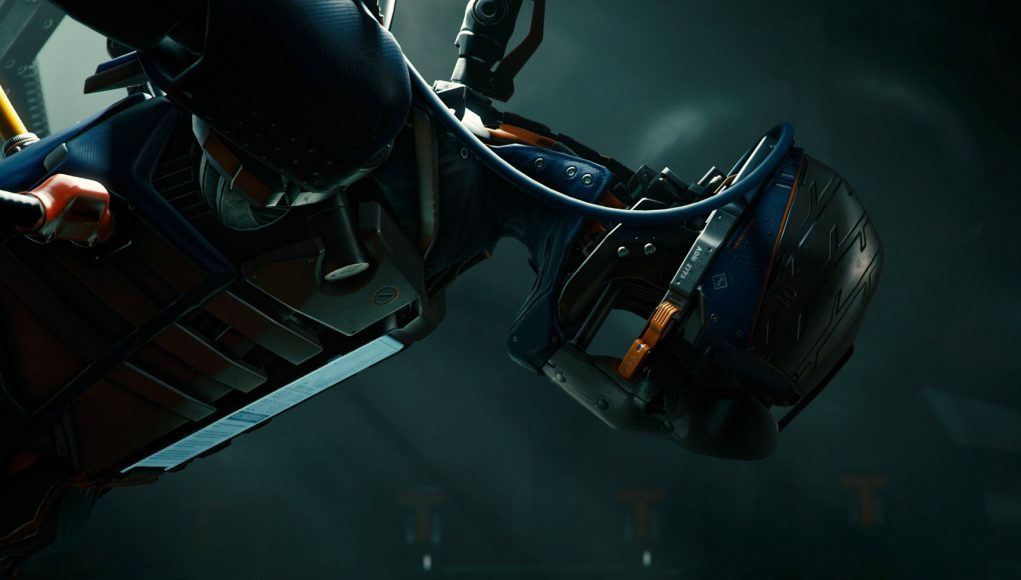Everyone in the VR industry can envision a world in the next 10 years that’s radically changed by virtual reality. From healthcare, education, social, training, cinema, gaming, and more, VR has a lot of Killer Use-cases. But it seems most of the industry is in agreement that the Killer App—a single, platform-defining piece of software that compels buyers—has not yet arrived. Unity’s Tony Parisi weighs in on how we might come to find it.
Every day this week leading up to the 2017 Game Developers Conference in San Francisco, we’re featuring insights on the hunt for the killer app from virtual reality’s leading companies. Today we hear from Tony Parisi, Head of VR & AR at Unity.
Tony Parisi
Parisi is a virtual reality pioneer, serial entrepreneur and angel investor. He is the co-creator of 3D graphics standards, including VRML, X3D and glTF, the new file format standard for 3D web and mobile applications. Parisi is also the author of O’Reilly Media’s books on Virtual Reality and WebGL: Learning Virtual Reality (2015), Programming 3D Applications in HTML5 and WebGL (2014), and WebGL Up and Running (2012). He is currently Head of VR and AR at Unity Technologies, where he oversees the company’s strategy for virtual and augmented reality.
Road to VR:
What traits do you think VR’s Killer App needs to have?
Parisi:
The first killer apps have already made their appearances, they are phenomenal and more will ship in 2017. That said, with each new innovation and upgrade in hardware/software a new crop of ‘killer apps’ will be created. It’s really just up to the creators and inventors to break new molds using each iteration of technology. As to today? Well, here are some examples in various genres:
Creativity apps – Tilt Brush
This is a foundational app that represents the evolution of painting/illustrating in the digital medium. While it might seems super obvious it’s a killer app not only because it blurs the lines between sculpting and painting but it also allows anyone to have the freedom to create, in a fully three-dimensional space. Add to that the recent updates that allow for animating your creations and you’re going to see some amazing works of art.
World Building – Job Simulator
It’s impressive and a great early sign that Owlchemy Labs was able to gross $3 million at this stage in the VR life cycle. Why is this a killer app? It’s one of the most creative takes on what it means to build and interact in a 3D virtual world, immersing users in the future’s take of the present. Like another great title, Fantastic Contraption, they make effective and interesting use of a room scale setup.
Storytelling
Sundance has a plethora of amazing experiences that pushed the boundaries of creativity. ASTEROIDS! utilized animation and interactive storytelling in both a beautiful and engaging way which would unfold differently depending on whether you were a passive or interactive user. ZeroDays adapted the documentary format to VR effectively and in an immersive way and was one of first of its kind. Overall, we hit a watershed, where the medium has moved beyond experimentation into the first natively-designed storytelling VR experiences that truly take advantage of the technology.
You might wonder how I can be talking about killer apps when there are only a few million devices out there. But I don’t judge an app’s ‘killer-ness’ by current scale. You just need to imagine that these kinds of apps will explode in popularity as the systems are adopted in greater numbers.
Road to VR:
If you had to make a bet, which sector of VR would you predict as the place where the first Killer App emerges?
Parisi:
I believe there will be some common attributes of killer VR apps including:
- Engaged Creativity: What I mean by this is, creativity doesn’t just come from the creators. Killer experiences will need to invite viewers/players/experiencers into the experiences and offer them the opportunity to continually engage themselves, engage with the experience, and engage with others who may be in at the same time. We’re a ways out from the ‘choose your own adventure’ style of VR experiences but it’s coming
- High Production Value: Seems like something that’s self evident, but to fully immerse people, to the point where they may even question what ‘reality’ is, requires thoughtful and thorough storytelling, beautiful and compelling graphics, and increasing levels of interactivity, whether that’s conversations, physical interaction, or social constructs that promote engagement.
- Social Interactions: I mentioned it earlier, but it’s worth reiterating, social will be a huge component to amazing VR experiences. It will make the difference between immersing yourself and losing yourself. To share is human, and this remains true for VR Killer Apps.
Beyond all that, everything else is the about fully utilizing the features that the software and hardware allow (motion, gestures, movement, graphics etc).
Road to VR:
Do you think VR’s Killer App will launch in 2017?
Parisi:
I don’t think there’s just one ‘killer app’, there will be many, across many different industries, and 2017 promises to reveal a lot more amazing apps. We are seeing Unity being used to develop applications in education, training, healthcare, design, manufacturing, film, and automotive, to name just a few. Most of these applications are still at the stage of early experimentation, with organizations figuring out how to make their 3D models and scenes interactive VR applications using Unity as a platform. Aside from understanding how to tell stories, there is a slew of technical and design work to be done, but the foundation is being laid now and it’s exciting to see.
See Also: 2017 Is Going to be a Watershed Year for Cinematic VR








